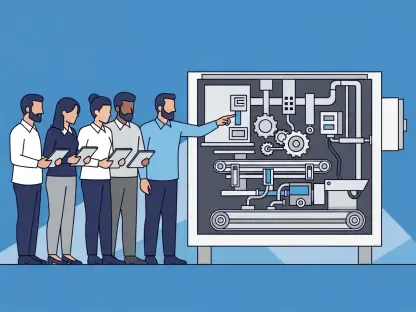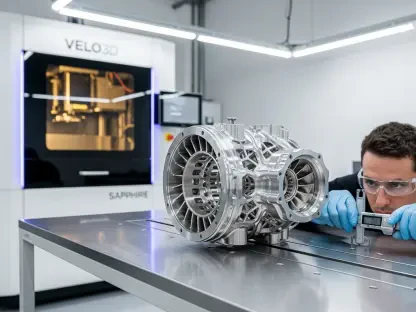In recent times, a notable surge in investments toward U.S. manufacturing has captured the attention of industry leaders, driven largely by tariff pressures introduced under the Trump administration and the resulting disruptions in global supply chains. This shift toward reshoring—bringing manufacturing operations back to domestic soil—has emerged as a strategic response to mitigate risks and enhance control over production. However, despite the substantial financial commitments, statistics reveal a sobering reality: up to 70% of major change initiatives, including reshoring efforts, fail to achieve their intended outcomes. The root cause often lies not in external factors like supply chain instability, but in inadequate change management practices and a lack of organizational adaptability. Companies risk billions by approaching reshoring as a mere logistical exercise rather than a comprehensive transformation. This critical oversight underscores the need for a deeper focus on the human and strategic elements of such transitions.
1. Understanding the Challenges of Reshoring Initiatives
Reshoring represents a significant pivot for manufacturing firms aiming to secure supply chains, boost productivity, and cut costs amid global uncertainties. However, the complexity of this transition extends far beyond moving equipment or setting up new facilities. A major challenge lies in managing the workforce transition, as employees both overseas and domestically grapple with feelings of uncertainty or unpreparedness. Overseas workers might experience a sense of abandonment as operations shift, while domestic teams could lack the necessary skills or context to adapt swiftly. Additionally, differing work cultures, communication styles, and performance expectations across regions complicate the harmonization of teams. Leaders must prioritize facilitating knowledge transfer between international and local staff to ensure continuity. Without deliberate strategies to address these human elements, companies face heightened risks of failure, potentially costing billions depending on the scale of their investment in reshoring projects.
The high failure rate of reshoring initiatives also stems from organizational resistance and inertia, which can be as detrimental as external supply chain disruptions. Many firms underestimate the internal pushback that can arise from employees and stakeholders unaligned with the reshoring vision. This resistance often manifests as reluctance to adopt new processes or roles, slowing down implementation and eroding morale. Compounding this issue is the current talent shortage in the manufacturing sector, which makes attracting and retaining skilled workers a pressing concern. To counter productivity losses when new plants come online, embracing technological innovations becomes essential. Companies must also recognize that reshoring is not just a physical relocation but a cultural and operational overhaul. Addressing these internal barriers requires a proactive approach to change management, ensuring that every level of the organization is prepared for the transformation and equipped to handle the challenges that accompany such a significant strategic shift.
2. Addressing Leadership Alignment for Seamless Transitions
A critical factor in the success of reshoring efforts is the alignment among organizational leaders, as a lack of unity can severely impact employee morale and overall productivity. Leaders must clearly articulate the rationale behind reshoring, outlining how it benefits not only the company but also customers, employees, distributors, and shareholders. Establishing transparent goals helps in crafting a strategy focused on specific outcomes while balancing the expectations of diverse stakeholders. For instance, investors often push for cost reductions, but these measures must not undermine long-term investments in sustainable cultures, processes, and systems. If short-term savings are prioritized over enduring adaptability, the business may struggle to respond to future industry disruptions. Ensuring that leadership communicates a cohesive vision is vital to maintaining trust and momentum throughout the reshoring process, preventing missteps that could derail the initiative.
Engagement across all organizational levels, particularly with middle management, plays a pivotal role in executing a successful reshoring strategy. Middle managers often find themselves caught between high-level directives and ground-level concerns, making their buy-in essential for effective implementation. When leadership fails to address competing priorities or provide clear guidance, these managers struggle to support their teams, leading to inefficiencies and frustration. High-level executives must stay connected with employees at every tier, acknowledging the hidden human complexities of reshoring. Regular dialogue with middle management can help identify and resolve issues before they escalate, ensuring that the workforce remains motivated and aligned with the broader objectives. By fostering a sense of shared purpose and direction, companies can mitigate the negative impacts of misalignment, creating a more cohesive environment where reshoring goals are understood and supported by all, thus enhancing the likelihood of a smooth transition.
3. Implementing Key Steps for Robust Change Management
To elevate the success of reshoring efforts, manufacturing leaders must treat the process as a large-scale transformation, investing equally in operational shifts and change management from the outset. The first step is to create a people-focused sense of urgency by incorporating workforce resilience into risk management plans alongside geopolitical and supply chain concerns. Internal communications should frame reshoring as more than a cost-saving measure; it should be positioned as a leap toward manufacturing excellence, promising benefits like faster delivery times and competitive pricing for customers. This approach helps employees see the broader value of their contributions, fostering a sense of purpose and reducing resistance to change. By emphasizing the human impact of reshoring, leaders can build a stronger case for adaptation, ensuring that teams are motivated to navigate the challenges and embrace the opportunities that come with returning operations to domestic soil.
The second step involves building cross-functional coalitions to ensure that reshoring impacts are addressed holistically across the organization. Including representatives from HR, plant managers, union leaders, and community stakeholders in the planning phase accelerates the integration of overseas and domestic operations. This inclusive strategy promotes cross-cultural understanding and buy-in, facilitating smoother communication and coordination between teams separated by geography. Such coalitions help bridge gaps in expectations and work practices, creating a unified front that supports the reshoring agenda. Additionally, involving diverse perspectives from the start allows companies to anticipate potential challenges and devise tailored solutions, minimizing disruptions. This collaborative approach not only strengthens internal alignment but also enhances the company’s ability to adapt to unforeseen issues, laying a solid foundation for a successful transition that respects and leverages the strengths of all involved parties.
4. Celebrating Progress and Embedding Cultural Change
Generating quick wins is a powerful third step in reinforcing the momentum of reshoring initiatives, as it demonstrates tangible progress to the entire organization. Sharing early successes through company-wide communications—whether they relate to infrastructure milestones or financial targets—helps build confidence in the process. A particular emphasis should be placed on highlighting individual employee transformations, such as skill development or role advancements, as these personal stories resonate deeply with staff. Celebrating these achievements allows teams to recognize the opportunities created by reshoring, fostering a positive atmosphere where peers can inspire one another. This focus on human success stories not only boosts morale but also counters skepticism about the initiative’s value, proving that reshoring can lead to meaningful growth for both the company and its workforce, thus encouraging broader acceptance and engagement across all levels.
The final step is to embed change into the company culture, ensuring that reshoring becomes a shared journey rather than a top-down mandate. Updating performance metrics to include workforce development outcomes can reinforce this shift, making employees at all levels feel that their contributions are valued. For instance, implementing reward structures for managers who excel in facilitating smooth people transitions empowers teams to take ownership of the process. This approach transforms reshoring from a passive experience into an active endeavor where staff shape the outcomes. By prioritizing cultural integration, companies create an environment where change is not just tolerated but embraced as a core value. This long-term commitment to people-centric strategies ensures that the benefits of reshoring are sustainable, positioning the organization to navigate future challenges with greater agility and resilience, ultimately distinguishing it from competitors who overlook the human dimension of transformation.
5. Reflecting on Strategic Investments in People
Looking back, it became evident that successful reshoring demanded more than just financial investment in equipment or facilities; it required an equal dedication to change management. Companies that allocated resources to address the human aspects of this transition often found themselves ahead of the curve, having built stronger, more cohesive teams. Budgeting for people-focused initiatives proved to be as critical as funding physical infrastructure, with many firms realizing that overlooking employee needs led to costly delays and setbacks. Those who prioritized workforce engagement and cultural alignment witnessed smoother transitions, as their employees adapted with a shared sense of purpose. This historical lesson highlighted that neglecting the people side of reshoring risked undermining even the most well-funded projects, emphasizing the importance of a balanced approach to transformation in achieving desired outcomes.
Moving forward, manufacturing leaders should focus on actionable strategies to sustain the gains made through reshoring, particularly by continuing to invest in employee development and organizational adaptability. Establishing ongoing training programs can help domestic workers acquire necessary skills, while regular feedback mechanisms ensure that concerns are addressed promptly. Additionally, fostering a culture of innovation will enable companies to stay responsive to industry shifts, leveraging technology to offset talent shortages. Those who mastered the human element of reshoring not only outperformed competitors but also built resilient organizations capable of withstanding future disruptions. As the manufacturing landscape evolves, the priority should remain on creating environments where change is a collaborative effort, ensuring long-term success by empowering every stakeholder to contribute to and benefit from the reshoring journey.









